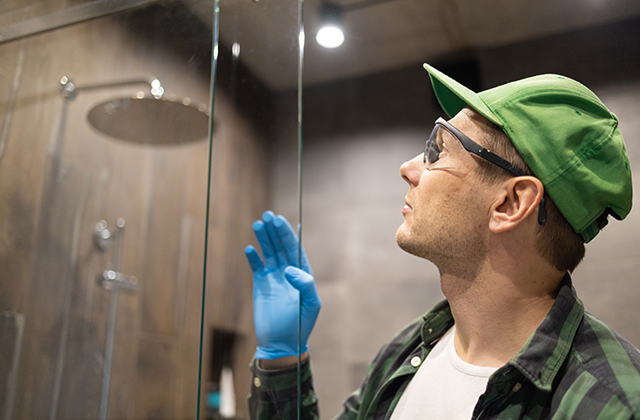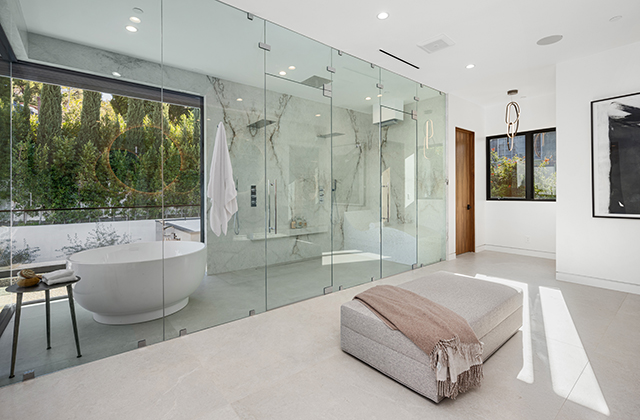A gleaming glass table top can be the highlight of any room, bringing a touch of sophistication and modern elegance to your space. However, keeping it in pristine condition requires some specialized care and techniques. In this comprehensive guide, we will explore professional tips and tricks to ensure your glass table top remains shiny and immaculate. Whether you’re looking for advice on daily maintenance or searching for the best glass for table top cut to size near me, you’ll find everything you need right here.
1. Understanding Your Glass Table Top
Before diving into the cleaning and maintenance techniques, it’s essential to understand the type of glass used in your table top. Common types include tempered glass, laminated glass, and annealed glass. Each type has unique properties and requires specific care to maintain its appearance and durability.
Types of Glass:
- Tempered Glass: Known for its strength and safety features, it is resistant to heat and impact.
- Laminated Glass: Composed of layers, this glass is highly durable and offers added safety due to its construction.
- Annealed Glass: Standard glass that is slowly cooled to relieve internal stresses, making it less strong than tempered or laminated glass.
Understanding your glass type will help you choose the appropriate cleaning methods and products, ensuring optimal care.
2. Routine Cleaning for a Shiny Surface
Regular cleaning is vital for maintaining the shine of your glass table top. Here’s a simple yet effective routine to follow:
Materials Needed:
- Microfiber cloths
- Glass cleaner (or a DIY solution of water and vinegar)
- Soft bristle brush
Steps:
- Dust Removal: Use a dry microfiber cloth to dust the surface and remove loose dirt and debris.
- Cleaning Solution: Spray a small amount of glass cleaner or a mixture of equal parts water and vinegar onto the table top.
- Wiping Technique: Wipe the surface in a circular motion with a clean microfiber cloth, ensuring no streaks are left behind.
- Edge Cleaning: Use a soft bristle brush to clean the edges and corners where dust tends to accumulate.
- Final Buff: Buff the surface with a dry microfiber cloth for an extra gleam.
3. Avoiding Common Mistakes
To keep your glass table top in top condition, it’s crucial to avoid common cleaning mistakes. Here are some pitfalls to watch out for:
Avoid Abrasive Materials:
- Steel Wool and Scouring Pads: These can scratch and damage the glass.
- Harsh Chemical Cleaners: Avoid cleaners that contain ammonia or bleach as they can damage the glass and leave streaks.
Proper Handling:
- Do Not Slide Objects: Always lift items when moving them to prevent scratches.
- Use Soft Pads: Place felt pads under decorative items to avoid direct contact with the glass.
4. Addressing Stubborn Stains
Occasionally, you may encounter stubborn stains that regular cleaning cannot remove. Here’s how to tackle them effectively:
Materials Needed:
- Baking soda
- Water
- Soft cloth
Steps:
- Make a Paste: Mix baking soda with a small amount of water to create a thick paste.
- Apply Paste: Apply the paste to the stained area and let it sit for a few minutes.
- Gently Scrub: Use a soft cloth to gently scrub the stain in a circular motion.
- Rinse and Dry: Rinse the area with clean water and wipe it dry with a microfiber cloth.
5. Preventing Scratches and Damage
Prevention is key to maintaining the shine and longevity of your glass table top. Here are some preventive measures:
Use Coasters and Placemats:
- Protect from Spills: Coasters and placemats prevent spills and heat from damaging the glass.
- Avoid Scratches: They also protect the surface from scratches caused by dishes and cutlery.
Soft Furniture Pads:
- Under Decor Items: Place soft pads under vases, sculptures, and other decor items to prevent scratching.
Handle with Care:
- Lifting Objects: Always lift items instead of sliding them across the table top.
6. Polishing for Extra Shine
Polishing your glass table top occasionally can enhance its shine and clarity. Here’s a simple polishing method:
Materials Needed:
- Commercial glass polish or a homemade mixture (2 cups of water, 1/4 cup of white vinegar, and 1/2 teaspoon of dish soap)
- Microfiber cloth
Steps:
- Apply Polish: Apply a small amount of glass polish or the homemade mixture to the surface.
- Buffing: Use a microfiber cloth to buff the surface in a circular motion.
- Final Wipe: Wipe away any excess polish with a clean, dry microfiber cloth.
7. Dealing with Chips and Cracks
Chips and cracks can be unsightly and potentially dangerous. Addressing them promptly is essential:
Minor Chips:
- Clear Nail Polish: Use clear nail polish or a glass repair kit to fill in minor chips.
- Application: Apply the nail polish or repair solution to the chip, let it dry, and gently buff with a soft cloth.
Major Damage:
- Professional Help: For significant cracks or chips, consult a professional to prevent further damage.
8. Seasonal Deep Cleaning
In addition to regular cleaning, performing a seasonal deep cleaning can help maintain the pristine condition of your glass table top.
Materials Needed:
- Glass cleaner
- Microfiber cloths
- Soft bristle brush
- Cotton swabs
Steps:
- Remove Items: Clear the table top of all items.
- Dust and Clean: Dust the surface and clean it with a glass cleaner.
- Detailed Cleaning: Use a soft bristle brush and cotton swabs to clean hard-to-reach areas, such as the edges and corners.
- Polish: Finish with a thorough polish for an extra shine.
9. Sourcing Glass for Table Top Cut to Size Near Me
If you need a custom-sized glass table top, finding a reliable provider is crucial. Here’s how to find the best glass for table top cut to size near me:
Online Research:
- Read Reviews: Look for local glass companies with positive reviews and testimonials.
- Check Services: Ensure they offer custom cutting services for table tops.
Visit Showrooms:
- Quality Check: Visit showrooms to inspect the quality of their glass products.
- Consultation: Discuss your specific needs and get professional advice.
Get Quotes:
- Compare Prices: Obtain quotes from multiple providers to ensure you get the best deal.
- Inclusions: Check what is included in the price, such as delivery and installation.
10. Childproofing Your Glass Table Top
If you have young children at home, childproofing your glass table top is essential to prevent accidents and maintain its condition.
Edge Guards:
- Safety: Install edge guards to protect both your children and the table top from accidental bumps and falls.
Table Stability:
- Secure: Ensure the table is stable and cannot be easily tipped over. Secure it to the wall if necessary.
Conclusion
Maintaining a gleaming glass table top requires regular care, preventive measures, and occasional deep cleaning. By following these professional techniques, you can ensure your glass table top remains shiny and pristine for years to come. Remember, the key to a beautiful glass table top lies in consistent and gentle care. Whether you’re performing routine cleaning, addressing stubborn stains, or sourcing glass for table top cut to size near me, these tips will help you achieve and maintain a flawless finish. Related site for glass table installation.


